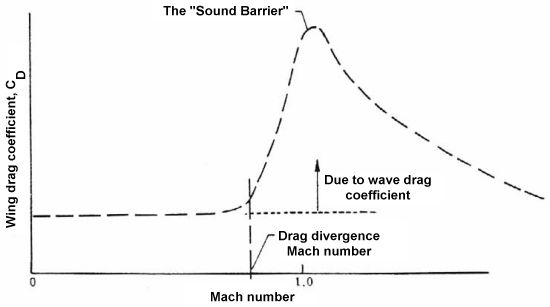Front-line fighters have their own critical performance requirements for the use of composites in the design. In this case, the share of composites applications is most affected by the maximum airspeed - more precisely, a Mach number.
The largest share of composites application with a maximum weight effect can be realized in the design of the front-line fighter aircraft with a maximum flight speed of 2.1 M, as the range of temperatures of airframe skin surface lay within the range of operating temperatures of the existing composites.
However, in this case, there are areas with increased operating temperature, where the use of composites is practically impossible, like nacelles of powerplant based on augmented turbofans, especially in the afterburners area. Due to the large thrust-weight ratio of modern front-line fighter and dimension of modern powerplants the mass fraction of metallic nacelles in the airframe is quite large.
The absence of metal armor and less stringent requirements for repair in the field can significantly extend the use of composites in the construction of the front-line fighter in comparison to attack aircrafts, so composites can be widely used in the fuselage, wing and empennage.
Domestic front-line fighters are intended for operations from non-prepated runways, and that limits the application of composites
in the lower and side surfaces of the mid-fuselage and aft-fuselage, as well as lower part of horizontal tail. But forward fuselage, in contrast to attack aircrafts, can be built mainly from composites.
Erosion problems with the leading edges of the wings and tail of the front-line fighters are as valid as the for the ground attack aircrafts. The difference in the sweep angle of the leading edges of the wing and tail is compensated by an increase of the maximum flight speed at sea level.
For front-line fighter with a maximum speed of flight M=2.1-2.35, there are additional restrictions on the use of existing composites in the area of air intakes and air duct of power plants due to deceleration of airflow to subsonic speeds with heating.
For supersonic interceptor with a maximum flight speed of M=2.35 use of existing composites in load-bearing structures is almost impossible, because their level of heat resistance does not cover the interceptor's operating temperature range. Here composites
can be used successfully only in airframe parts, protected from aerodynamic heating, such as equipment bays, and crew cabin.
Development of the new composites with high level of mechanical and thermal stability and higher performance than the metal alloys is a complex scientific and technical challenge, since the strength of composites more determined by the strength of the polymer matrix and the strength of its connection to the reinforcing filler, the mechanical properties of all polymers with increasing temperature faster fall than mechanical properties of the
metal alloys. Possible progress in heat resistance composite materials is associated with the use of metallic, ceramic and carbon matrix, but their mechanical properties close to those of metal alloys, price is excessively high, and manufacturability is lowered.


